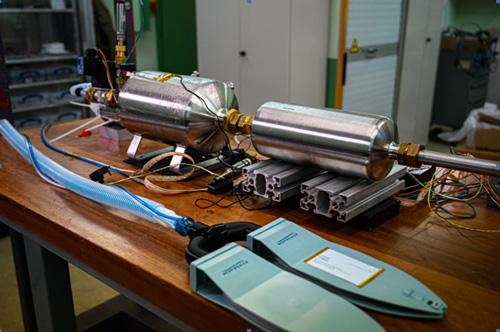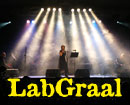| English Page |
CERN establishes task force to contribute to global fight against COVID-19 |
 |
 |
| 24 April 2020 | ||
CERN establishes a task force to identify and support contributions from the Organization to combatting COVID-19 pandemic
CERN has established a task force to identify and support contributions from the Organization’s 18 000-strong global community to combatting the COVID-19 pandemic. Set up by the Director-General at the end of March, the CERN against COVID-19 task force has already received hundreds of messages suggesting ideas ranging from producing sanitizer gel to designing and building sophisticated medical equipment. The design of a novel ventilator, expected to be tested by healthcare experts in the coming weeks, is an example of deployment of CERN’s technology to the service of society in these troubled times. Details of the initiatives and projects supported will be published on the dedicated website cern.ch/against-covid-19, which will be regularly updated. “CERN is a world leading laboratory in particle physics and in the related technologies. As such, it’s a hub of resources, including the World-wide LHC Computing Grid, WLCG, mechanical workshops, sophisticated design and prototyping facilities, advanced technologies and expertise ranging from science and engineering to industrialisation,” said Director-General Fabiola Gianotti. “We want to deploy our resources and competences to contribute to the fight against the COVID-19 pandemic.” CERN’s overall approach is to ensure effective and well-coordinated action, drawing on CERN’s many competencies and advanced technologies and working closely with experts in healthcare, drug development, epidemiology and emergency response so as to maximise the impact of the Organization’s contributions. To this end, the Organization has established links with local hospitals and emergency services, and in the context of an agreement established in 2011, entered into dialogue with experts at the World Health Organization. Discussions are also underway with sister European scientific organisations, the European Molecular Biology Organization and the European Bioinformatics Institute. “We have been very encouraged by the enthusiasm of the community to contribute,” said task-force chair Beniamino Di Girolamo. “Ideas range from the deployment of CERN’s powerful computing, engineering and technical resources, to assisting the local effort through logistical and emergency response support.” Initiatives already underway include the production of one tonne of sanitizer gel to distribute to local emergency response teams. The CERN Fire and Rescue Service has been working with the emergency services in the region since late March. CERN’s 3D printing and workshop capability has been deployed to complement the production of protective equipment such as masks and Perspex barriers for law enforcement in the region. Studies are underway to deploy the particle physics community’s considerable computing capacity to assist in the search for a vaccine. Another project being pursued is a novel streamlined ventilator, called HEV, led by a team of physicists and engineers from the LHCb collaboration at CERN and supported by several CERN services. As the pandemic spreads, the number of hospitalised patients requiring ventilators has led to a global shortage of supplies. The team realised that the types of systems used to regulate gas flows for particle physics detectors could be used to design a novel ventilator. The HEV design could be used for patients in mild or recovery phases, enabling the more high-end machines to be freed up for the most intensive cases. It is a safety-first design, intended to satisfy clinical requirements for the most requested ventilation modes for COVID-19 patients. The first stage of prototyping was achieved at CERN on 27 March, with a concept that relies on inexpensive and readily available components. The desired physical characteristics of the pressure regulators, valves and pressure sensors are now being refined, and the support of clinicians and international organisations is being harnessed for further testing within hospital settings. The control software for this device will be encapsulated in a dedicated microcontroller that will, along with other low-power components, enable the deployment of the HEV in areas with limited resources and unstable power distribution, making possible to power it with batteries, solar panels or emergency power generators. The aim is to release CERN developments against COVID-19 under the CERN Open Hardware Licence so that equipment may be produced wherever there is a need, and adapted to local regulatory frameworks. As these projects mature, details will be made available at cern.ch/against-covid-19. |
 -->
-->













